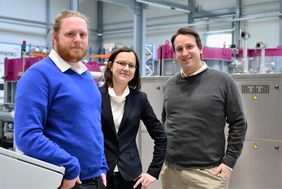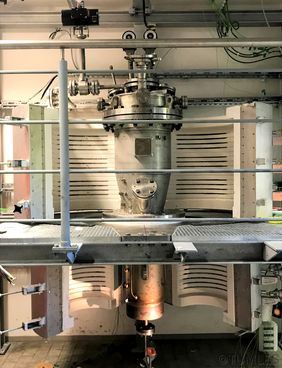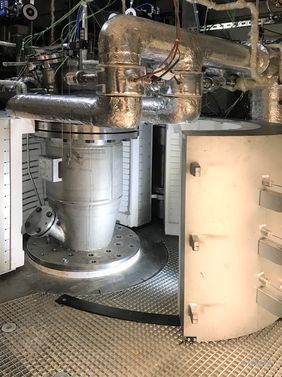SCHWING Technologies attaches great importance not only to customer satisfaction and individually tailored services, but also to its ties to universities and colleges. The company with special expertise in fluid bed process technology has been cooperating with research institutes throughout Germany for many years. The SCHWING team of experts regularly tests new applications at the company campus in Neukirchen-Vluyn on the Lower Rhine. Ralf Sonnen, Michael J. Robinson, Julian Nienhaus, and Natalya Prodan are the specialists when it comes to process development and reactor tests for fluidized bed process technology.
TWIST: Research project for thermochemical energy storage solutions
A current example is the research project "TWIST" (Thermochemischer Energiespeicher im Wirbelschichtverfahren für Industrieanwendungen und Stromerzeugung/Thermochemical Energy Storage in Fluidized Bed Systems for Industrial Applications and Power Generation). "We are supporting the Technical University of Munich (TUM) in this project," explains SCHWING senior expert Ralf Sonnen. "In cooperation with other players, we are developing a thermochemical energy storage solution based on our fluidized bed technology.” In the future, this solution will serve as a flexible heat storage option. The TWIST project is an important aspect to significantly increase energy efficiency in the industrial sector.
The tests are carried out with lime. Natalya Prodan, chemical engineer at SCHWING: "The material is perfectly suited for this application. The energy density of the lime makes it an excellent storage medium. In addition, lime is inexpensive and available in large quantities."
The project is managed by the Chair of Energy Systems at the Department of Mechanical Engineering of TUM. Additional partners from industry and research are accompanying the project. The research project, funded by the Federal Ministry of Economics and Energy started in September 2018, aims to advance storage technology from the pilot phase to the megawatt scale by 2022.
A total of three stages are planned for this:
(http://www.es.mw.tum.de/en/research/projects/twist/)
Step 1: Commissioning of the process technology and trials with the pilot reactor
Step 2: Analysis of the process data
Step 3: Scale-up for large-scale plants
TcEt: Research project for thermal power plants
TWIST builds on a successfully completed predecessor project (TcEt) for the fluidization of powdered storage media (Thermochemischer Energiespeicher für thermische Kraftwerke und industrielle Wärme/thermochemical energy storage for thermal power plants and industrial heat). In cooperation with TUM, the SCHWING experts developed the pilot reactor plant FluBEStoR (Fluidized Bed Energy Storage Reactor) between 2013 and 2018, a thermochemical energy storage concept for thermal power plants and industrial heat. Its storage properties were first tested in a glass cylinder, the process was then piloted at the bench scale, and finally the pilot reactor was built.
Fine powders, granulated solids, or component mixtures can be used in this reactor as reliable storage materials. SCHWING engineer Julian Nienhaus: "Thanks to the controlled, uniform, and reproducible processing, the material—in this case lime—binds energy and thus becomes a thermochemical storage medium.” Those involved in the project are convinced that this also has great potential for use as a long-term energy storage facility.
Fluidized bed technology: fluidization of powdered storage media
It is above all the excellent heat transfer and the reversibility of the chemical reaction that destined fluid bed process technology for this application. It transforms the behaviour of individual particles into a gently mixing and liquid-like solid-gas mixture. Each solid particle is therefore in a gas-rich environment. "At the heart of our reactor is a proprietary gas distribution plate," explains Michael J. Robinson, "which is specially configured for the respective material and offers very uniform temperature control and large exchange surfaces between solids and gas.” For TWIST, the reactor can be operated up to 700 degrees Celsius at elevated pressure in batch or continuous mode, in individual cases up to 1100 degrees Celsius.
Efficiency increase and cost optimization
The long-term goal of the TWIST research project is to increase the efficiency and optimize the costs of highly integrated industrial processes. By decoupling electricity and heat production over time, fuel consumption can be reduced and overproduction of electricity avoided. At the same time, such a storage system allows for capture of excess renewable energy sources at generation peaks.



